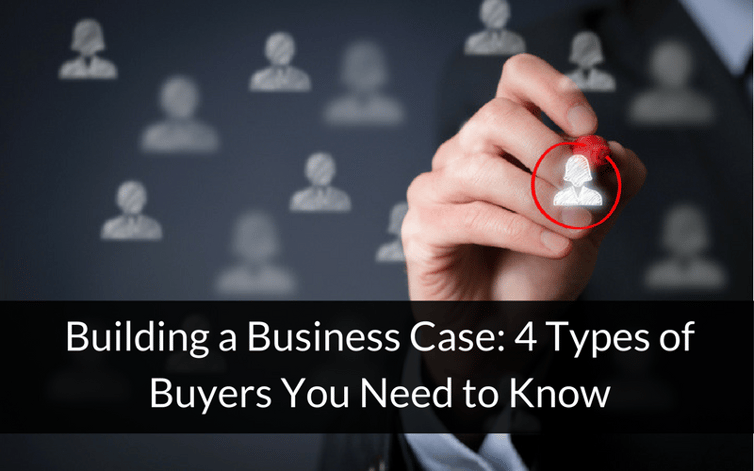
Before you can build a successful business case, you need to know your audience. The first thing you need to know is that each individual has a different agenda and different concerns. Everything is experienced based on his or her level in the company hierarchy.
Moving from the lowest on the totem pole to the executive suite, here are four buyer personalities who respond to specific segments of information.
1. User/Manager
The user role is typically embodied by a department manager whose primary concern is how your solution will help achieve his or her objectives. The user/manager and his or her employees will use the solution on a daily basis. How will your solution impact the user’s job?
This is the buyer who is looking at features, functions, and training provisions. Your opportunity though is to advance the buyer’s knowledge by using an assessment tool showing where the department is, for example, inefficient or underproductive and how your solution can change that.
You can also use a value calculator to provide the user/manager with ammunition that will interest those in higher positions who want to know whether the investment is worth it.
A typical user/manager question is, “Can we rely on your company to provide technical support whenever we need it?” Your best bet is not a simple “Yes”, but rather a value statement around the services provided by your technical support team.
2. Technical Buyer
The technical buyer may be the CIO or, more likely, the proxy for the CIO. The technical buyer is a little higher in the organization than the user/manager, and the main concern is the difficulty of integrating your solution into the company’s existing processes.
The technical buyer looks at the research, evaluates the various options and determines how well the solution meets the technology requirements rather than how it impacts the day-to-day job process.
This buyer wants you to show how your solution will be easy to plug into the workflow, and what it will improve. This is your opportunity to showcase how, for example, your solution will lower maintenance costs for the IT department or allow for a legacy system to be archived.
A typical technical buyer question is, “Is your product release compatible with the rest of my equipment and software?” You need to provide a level of assurance in your answer but also illustrate how your solution makes life better for the technical buyer.
3. Vice President
The Vice President may represent the CFO. At this level, the buyer wants to know how your solution will:
- Increase revenue
- Reduce costs
- Minimize risk
- Improve brand or image
The Vice President or CFO will be influenced by the time to benefit rather than features or integration efforts. Furthermore, the Vice President or CFO proxy will want to know whether your solution is worth funding in the place of another initiative or how it will fit with the company’s operations as a whole.
The total cost of ownership will also influence the purchase decision when you show the net lifecycle value of your solution compared to other alternatives.
A typical question at this level is, “What kind of return can we expect on our investment?” This is your opportunity to use an ROI tool and build the business case for your solution.
4. Executive Management
This includes everyone in the C-suite, especially the CEO, who looks at the broadest picture of all, asking, “How will this solution impact:”
- Share price
- Earnings growth
- Return on equity
The CEO is interested in how your solution will impact market share in the wider industry and how it will help the company compete. Your business case should include the financial justification for your solution as well as the opportunity cost of staying with the status quo.
Including potential increased revenues that could be used to compete more broadly through increased shareholder interest, a larger budget for marketing or R&D, and growth in the business case will often have the most effect at the top.
Conclusion
As you can see, each level of management speaks a different language, and as you head towards the C-suite, that language becomes exclusively financial and all-encompassing of the business. Unlike the details of features the user needs to know or how well it can be integrated into existing operations, those higher on the ladder have the bigger picture in mind.
Your business case must speak to each level of buyer to become the final choice. When the buying decision is being made by a larger and larger group of people, you need to learn how to talk to all of them.









